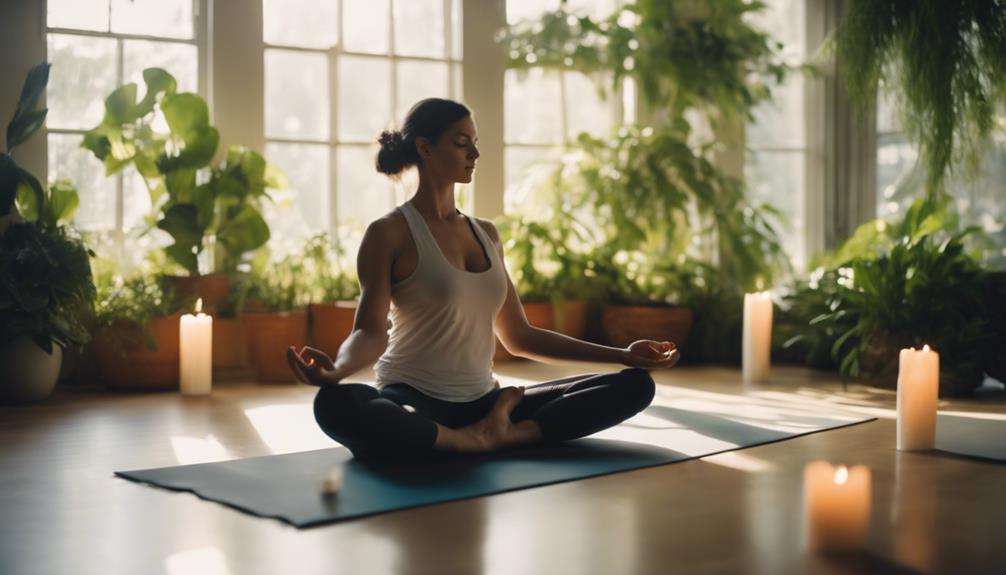How To Select Yoga Mat

Selecting the right yoga mat is essential for a fulfilling yoga practice, whether you’re a beginner or a seasoned yogi. With so many options available, it can be overwhelming to find the perfect mat that meets your needs. In this guide, we’ll explore how to select a yoga mat that complements your practice and provides comfort, stability, and durability.
Understanding Different Types of Yoga Mats
When learning how to select a yoga mat, it’s crucial to understand the different types available on the market. Yoga mats are generally classified based on their material, thickness, and texture. The most common materials include PVC, TPE, natural rubber, and cotton. PVC mats are the most affordable and provide excellent durability, while TPE mats are eco-friendly and lightweight. Natural rubber mats offer superior grip and are perfect for hot yoga, although they may come at a higher price. Lastly, cotton mats are often used for restorative practices and provide a soft touch. Understanding these options will help you make an informed decision tailored to your specific yoga style.
Consider the Thickness of Your Yoga Mat
Thickness plays a vital role in how to select a yoga mat. Mats typically range from 1/16 inch to 1/4 inch thick. A thinner mat (1/16 inch) is great for stability and balance, making it ideal for yoga styles like Ashtanga or Power Yoga. On the other hand, if you have sensitive joints or prefer restorative yoga, a thicker mat (1/4 inch) can provide extra cushioning. For most practitioners, a mat that is about 1/8 inch thick strikes a good balance between stability and comfort. Always consider your body type and any existing injuries when determining the ideal thickness for your yoga mat.
Evaluate the Texture and Grip of Your Yoga Mat
Grip is another crucial factor when learning how to select a yoga mat. A mat with good texture helps prevent slipping during practice, which can be especially important in styles like Vinyasa or Hot Yoga. Mats with a textured surface can offer more grip, while smoother mats may facilitate easy transitions but could lead to slipping. Natural rubber mats typically provide excellent grip, even when wet, while PVC mats may vary in grip quality. If possible, try out different mats in a store or studio to see which texture feels best for your practice.
Related Posts:
Assessing the Size of Your Yoga Mat
Size is often overlooked when figuring out how to select a yoga mat, but it can significantly impact your practice. Standard yoga mats measure 68 inches long and 24 inches wide, but taller individuals may require longer mats, which can be found in sizes up to 84 inches. Additionally, consider the width of the mat, as some brands offer wider options for added comfort. When selecting a mat, ensure that it accommodates your height comfortably, allowing you to perform poses without feeling restricted.
Choosing Eco-Friendly Yoga Mats
As awareness of environmental issues grows, many yogis are interested in how to select a yoga mat that aligns with their eco-friendly values. Eco-friendly mats are made from sustainable materials such as natural rubber or TPE, which are biodegradable and free from harmful chemicals. When searching for a yoga mat, look for certifications such as OEKO-TEX or USDA Organic to ensure that the product is environmentally friendly. Investing in an eco-friendly mat not only supports your practice but also contributes to a healthier planet.
Budget Considerations When Selecting a Yoga Mat
When learning how to select a yoga mat, budget is often a significant factor. Yoga mats can range from as little as $20 to over $200, depending on the brand and materials used. While it might be tempting to opt for the cheapest option, remember that a low-quality mat may wear out quickly, requiring you to purchase a replacement sooner. Investing in a mid-range or higher-quality mat can enhance your practice experience and prove more cost-effective in the long run. Consider what features are essential for your practice and find a mat that fits both your needs and budget.
Maintenance Tips for Your Yoga Mat
Once you’ve selected the perfect yoga mat, knowing how to maintain it is essential for longevity. Regular cleaning will keep your mat fresh and free from bacteria. Most mats can be wiped down with a gentle soap solution or a specialized yoga mat cleaner after each use. Avoid using harsh chemicals, as these can degrade the material over time. Additionally, store your mat in a cool, dry place away from direct sunlight to prevent it from deteriorating. Following these maintenance tips will help ensure that your mat remains in excellent condition for years to come.
Final Thoughts on How to Select a Yoga Mat
In conclusion, knowing how to select a yoga mat involves considering various factors, including material, thickness, grip, size, eco-friendliness, and budget. Take the time to research and test different mats to find the one that best suits your practice and personal preferences. Remember, your yoga mat is an essential tool that can enhance your practice, so choose wisely! By following the guidelines outlined in this article, you’ll be well on your way to selecting a yoga mat that elevates your yoga experience and supports your journey toward mindfulness and well-being.
With the proper knowledge and understanding of what makes a great yoga mat, you can confidently make a choice that will benefit your practice for years to come. Happy practicing!Yoga Swing